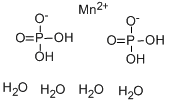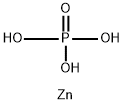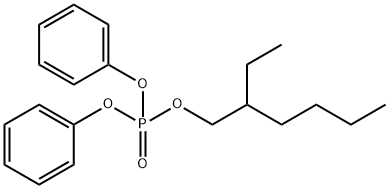Sodium dihydrogen phosphate dihydrate
Synonym(s):mono-Sodium orthophosphate, Sodium biphosphate, Sodium phosphate monobasic;Sodium dihydrogen phosphate dihydrate;Sodium phosphate monobasic dihydrate
- CAS NO.:13472-35-0
- Empirical Formula: NaH2PO4·2H2O
- Molecular Weight: 156.01
- MDL number: MFCD00149209
- EINECS: 603-853-2
- SAFETY DATA SHEET (SDS)
- Update Date: 2025-12-17 09:50:08

What is Sodium dihydrogen phosphate dihydrate?
Chemical properties
white crystalline solid
Chemical properties
The USP 32 states that monobasic sodium phosphate contains one
or two molecules of water of hydration or is anhydrous.
The hydrated forms of monobasic sodium phosphate occur as
odorless, colorless or white, slightly deliquescent crystals. The
anhydrous form occurs as a white crystalline powder or granules.
The Uses of Sodium dihydrogen phosphate dihydrate
Sodium dihydrogen phosphate dihydrate acts as buffering capacity reagent in molecular biology, biochemistry and chromatography. It is used in the preparation of biological buffers. It is also used in the purification of antibodies, as a laxative and, in combination with other sodium phosphates.
Sodium phosphate monobasic dihydrate is a reagent with very high buffering capacity widely used in molecular biology, biochemistry and chromatography. Sodium phosphate dibasic is highly hygroscopic and water soluble.
Recommended chemicals for the preparation of phosphate buffers are sodium dihydrogen phosphate dihydrate,NaH2PO4.2H2O(mol. wt.156.0),disodium hydrogen phosphate dihydrate,Na2HPO4.2H2O (mol. wt.178.0), and sodium hydroxide pellets.
The Uses of Sodium dihydrogen phosphate dihydrate
Sodium dihydrogen phosphate dihydrate is typically used as a phosphate buffer system component for downstream biomolecule chromatography steps or final liquid formulation.
Due to its low microbial and endotoxin limits, Sodium dihydrogen phosphate dihydrate Emprove? Expert is especially suitable for high-risk applications.
What are the applications of Application
Sodium phosphate monobasic dihydrate is a high buffering capacity reagent
Production Methods
Monobasic sodium phosphate is prepared by adding phosphoric acid to a hot, concentrated solution of disodium phosphate until the liquid ceases to form a precipitate with barium chloride. This solution is then concentrated and the monobasic sodium phosphate is crystallized.
Pharmaceutical Applications
Monobasic sodium phosphate is used in a wide variety of
pharmaceutical formulations as a buffering agent and as a
sequestering agent. Therapeutically, monobasic sodium phosphate
is used as a mild saline laxative and in the treatment of hypophosphatemia.
Monobasic sodium phosphate is also used in food products, for
example, in baking powders, and as a dry acidulant and
sequestrant.
Biochem/physiol Actions
Sodium phosphate monobasic also referred to as sodium dihydrogen phosphate is a chemical reagent possesses high buffering capacity and is used for preparing biological buffers. It was used as a phosphate supplement for determining whether phosphate supplementation can prevent rickets in very low birth weight infants with prenatal deficiency of phosphate.
Safety
Monobasic sodium phosphate is widely used as an excipient in
parenteral, oral, and topical pharmaceutical formulations.
Phosphate occurs extensively in the body and is involved in
many physiological processes since it is the principal anion of
intracellular fluid. Most foods contain adequate amounts of
phosphate, making hypophosphatemia virtually unknown except
in certain disease states or in patients receiving total parenteral
nutrition. Treatment is usually by the oral administration of up to
100 mmol of phosphate daily.
Approximately two-thirds of ingested phosphate is absorbed
from the gastrointestinal tract, virtually all of it being excreted in the
urine, and the remainder is excreted in the feces.
Excessive administration of phosphate, particularly intravenously,
rectally, or in patients with renal failure, can cause
hyperphosphatemia that may lead to hypocalcemia or other severe
electrolyte imbalances. Adverse effects occur less frequently
following oral consumption, although phosphates act as mild saline
laxatives when administered orally or rectally (2–4 g of monobasic
sodium phosphate in an aqueous solution is used as a laxative).
Consequently, gastrointestinal disturbances including diarrhea,
nausea, and vomiting may occur following the use of monobasic
sodium phosphate as an excipient in oral formulations. However,
the level of monobasic sodium phosphate used as an excipient in a pharmaceutical formulation is not usually associated with adverse
effects.
LD50 (rat, IM): 0.25 g/kg(10)
LD50 (rat, oral): 8.29 g/kg
Storage
Monobasic sodium phosphate is chemically stable, although it is
slightly deliquescent. On heating at 100°C, the dihydrate loses all of
its water of crystallization. On further heating, it melts with
decomposition at 205℃, forming sodium hydrogen pyrophosphate,
Na2H2P2O7. At 250℃ it leaves a final residue of sodium
metaphosphate, NaPO3.
Aqueous solutions are stable and may be sterilized by autoclaving.
Monobasic sodium phosphate should be stored in an airtight
container in a cool, dry place.
Incompatibilities
Monobasic sodium phosphate is an acid salt and is therefore
generally incompatible with alkaline materials and carbonates;
aqueous solutions of monobasic sodium phosphate are acidic and
will cause carbonates to effervesce.
Monobasic sodium phosphate should not be administered
concomitantly with aluminum, calcium, or magnesium salts since
they bind phosphate and could impair its absorption from the
gastrointestinal tract. Interaction between calcium and phosphate,
leading to the formation of insoluble calcium phosphate precipitates,
is possible in parenteral admixtures.
Regulatory Status
GRAS listed. Accepted for use as a food additive in Europe. Included in the FDA Inactive Ingredients Database (injections; infusions; ophthalmic, oral, topical, and vaginal preparations). Included in nonparenteral and parenteral medicines licensed in the UK. Included in the Canadian List of Acceptable Non-medicinal Ingredients.
Properties of Sodium dihydrogen phosphate dihydrate
| Melting point: | 60 °C |
| Density | 1,915 g/cm3 |
| storage temp. | Store at +5°C to +30°C. |
| solubility | H2O: 1 M at 20 °C, clear, colorless |
| form | Solid |
| color | White |
| Odor | Odorless |
| PH | 4.0-4.5 (25℃, 50mg/mL in H2O) |
| PH Range | 4.2 - 4.5 |
| Water Solubility | SOLUBLE |
| λmax | λ: 260 nm Amax: 0.085 λ: 280 nm Amax: 0.070 |
| Sensitive | Hygroscopic |
| Merck | 14,8660 |
| Stability: | Stable. |
| CAS DataBase Reference | 13472-35-0(CAS DataBase Reference) |
| EPA Substance Registry System | Phosphoric acid, monosodium salt (13472-35-0) |
Safety information for Sodium dihydrogen phosphate dihydrate
Computed Descriptors for Sodium dihydrogen phosphate dihydrate
| InChIKey | VBJGJHBYWREJQD-UHFFFAOYSA-M |
Sodium dihydrogen phosphate dihydrate manufacturer
J J Chemicals
Buradon Inc.
Halogens
New Products
4,4-Difluoropiperidine hydrochloride tert-butyl 9-methoxy-3-azaspiro[5.5]undecane-3-carboxylate Indole Methyl Resin N-Isopropylurea N,N-Dicyclohexylcarbodiimide(DCC) MELDRUMS ACID 5-METHYLISOXAZOLE-4-CARBOXYLIC ACID Magnessium Bis glycinate Zinc ascorbate 1-bromo-2-butyne 2-acetamidophenol 9(10H)-anthracenone Erythrosin B, 4-Piperidinopiperidine 2-((4-morpholinophenylamino) (methylthio) methylene) malononitrile 2,4-dihydroxybenzaldehyde 3-(4-morpholinophenylamino)-5-amino-1H-pyrazole-4-carbonitrile Methyl 2-methylquinoline-6-carboxylate 2,6-dichloro-4-nitropyridine 4-Bromo-2-chlorobenzonitrile 2-(benzylamino)acetic acid hydrochloride 4-(tert-Butoxycarbonylamino)but- 2-ynoic acid 3,4-dihydro-2H-benzo[b][1,4]dioxepine 1-Phenyl-1-cycloprppanecarboxylicacidRelated products of tetrahydrofuran








You may like
-
 Sodium dihydrogen phosphate dihydrate 99%View Details
Sodium dihydrogen phosphate dihydrate 99%View Details -
 Sodium dihydrogen phosphate dihydrate 98%View Details
Sodium dihydrogen phosphate dihydrate 98%View Details -
 Sodium Dihydrogen Orthophosphate Dihydrate (ER) CAS 13472-35-0View Details
Sodium Dihydrogen Orthophosphate Dihydrate (ER) CAS 13472-35-0View Details
13472-35-0 -
 Sodium Phosphate Monobasic Dihydrate CASView Details
Sodium Phosphate Monobasic Dihydrate CASView Details -
 Sodium Dihydrogen Ortho phosphate CAS 13472-35-0View Details
Sodium Dihydrogen Ortho phosphate CAS 13472-35-0View Details
13472-35-0 -
 Sodium Dihydrogen Orthophosphate CAS 13472-35-0View Details
Sodium Dihydrogen Orthophosphate CAS 13472-35-0View Details
13472-35-0 -
 Sodium Dihydrogen Orthophosphate Dihydrate CAS 13472-35-0View Details
Sodium Dihydrogen Orthophosphate Dihydrate CAS 13472-35-0View Details
13472-35-0 -
 SODIUM DI HYDROGEN PHOSPHATE DI-HYDRATE IPView Details
SODIUM DI HYDROGEN PHOSPHATE DI-HYDRATE IPView Details
13472-35-0
